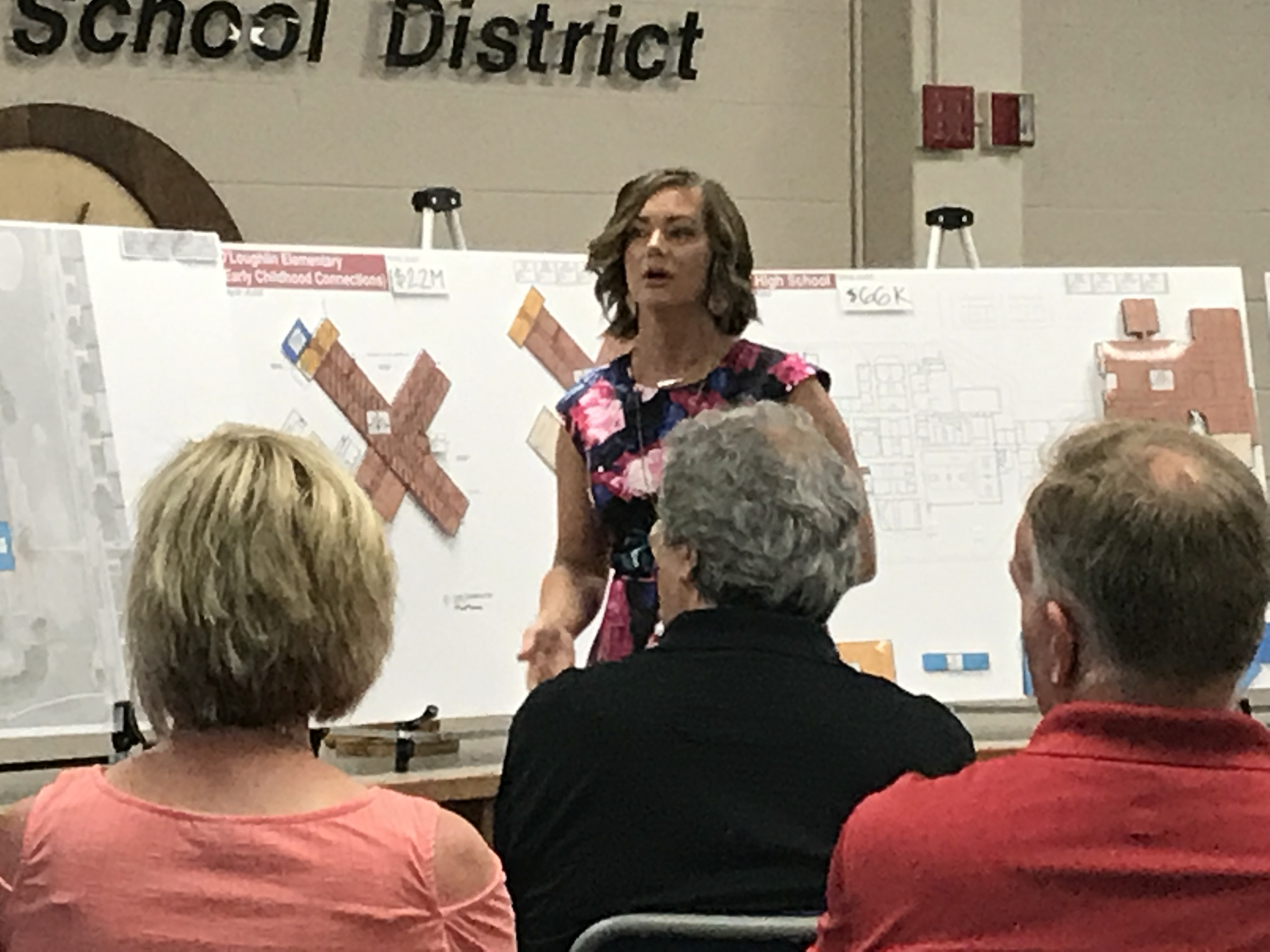
By CRISTINA JANNEY
Hays Post
The team charged with developing a bond issue for the Hays school district has developed a list of priorities for bond improvements and three possible options for funding those projects.
The Vision Team hopes to refine the plans in the coming weeks and eventually will take them to the USD 489 school board for consideration.
The Vision Team narrowed its priorities based on three tax structures in work session Tuesday night.
The first would rely exclusively on property taxes.
DLR, the district’s architect, found in a survey the majority of voters surveyed in the district indicated they would be willing to pay between $10 and $20 more in taxes per month on a $150,000 home for school improvements.
A bond issue that would raise property taxes by $14.99 per month on a $150,000 would raise $56 million for school improvements.
The second plan would include a half-cent city sales tax that would be in effect for 10 years. This, coupled with the mill levy increase, would raise $78 million.
The Hays City Commission would have to approve the tax before a bond question could go on the ballot.
The final plan would use a countywide sales tax. The half-cent tax would run for the full 25 years of the bond. A mill levy tax that would raise property tax $12.94 per month on a $150,000 home, plus the countywide sales tax, would raise $89 million.
A portion of money raised from a countywide sales tax would go to the other school districts. Revenue would be distributed based on headcount.
The Ellis County Commission and all the cities in the affected area would have to approve the tax before the bond issue could go on the ballot.
The vision team decided to focus on work at the elementary schools, which would include a new elementary school and renovations and additions at Wilson and Roosevelt elementary schools.
Improvements could include “right-sized” classrooms, with all of the elementary schoolsbecoming four-section schools after renovations.
Among the Vision Team members, creating storm shelters and increasing security at all buildings were top priorities. At all funding levels, the team sought to improve security and make storm shelters available for all students at all schools.
Amber Beverlin, senior architect for DLR, noted Wilson has undersized classrooms, as well as structural and ADA issues that need to be addressed.
A complete renovation for Wilson would cost $16.3 million. Some present questioned the prudence of spending that much on a 58-year-old building.
Jim French, DLR’s global K-12 sector leader, said some savings could be realized by adding new space at the building that could be used for innovation and creative learning centers instead of moving walls to make classrooms bigger.
The scope of the Wilson work has yet to be determined.
As the plan stands now, Lincoln Elementary School would be closed. The district would set aside money in the bond to deal with closed buildings. It could sell them or demolish them.
Work at the high school and middle school would depend on the amount of funding available.
The group prioritized the needs at the high school in this order: storm shelters, mechanical updates, performing arts educational space, right-sizing classrooms for 21st century learning, physical education space, career and technical education space.
At the middle school, the priorities were as follows: right-sizing the kitchen and cafeteria for the student population, physical education space, classroom addition, and renovating classrooms.
Another option discussed was to renovate O’Loughlin and use it to house the learning center, early childhood program and the Westside program. The renovations would include the addition of a storm shelter.
In talks with educators, Beverlin noted the director of the early education program said the program would have to be reduced in size unless it was relocated.
A member of the committee expressed concern about the three programs being housed in the same building.
Beverlin said educators said they were comfortable putting all three programs in the same building and areas could be separated so students in the different programs did not co-mingle.
Westside and Washington would be closed under this plan, and Munjor would go back to the church.
“I think this is worth having,” Chris Dinkel, committee member, said of the O’Loughlin renovations. “I think it is a necessity. I just walked through Westside today, and it is not good.”
Superintendent John Thissen said he would take a plan to use utility savings to pay for improvement of the HVAC system at the high school to the school board. This means that $5.8 million that the committee had planned to spend at the high school could be funneled into other projects.
Some board members said they were concerned that the $89 million option was too close to the previous bond issue that failed.
“I think we have a lot more buzz,” Dinkel said. “(During the previous bond election), 90 percent of people said they had not even heard that it was happening. It was if we were forcing through $90 million.
“I don’t think we have the same atmosphere in Hays. This is a different plan significantly. … I think people are much more engaged in the process.”
French said, “The 300 staff members in district had no passion for the previous bond. Now the educators realize the time has come and they can no longer live in environments that don’t work. They know they need to work to educate parents why we need to do this.”
The vision team has been working on this process for six months. It hopes to have final plans soon, as the longer the bond is delayed, the more construction costs could increase, potentially costing the district millions more to complete the improvements.
